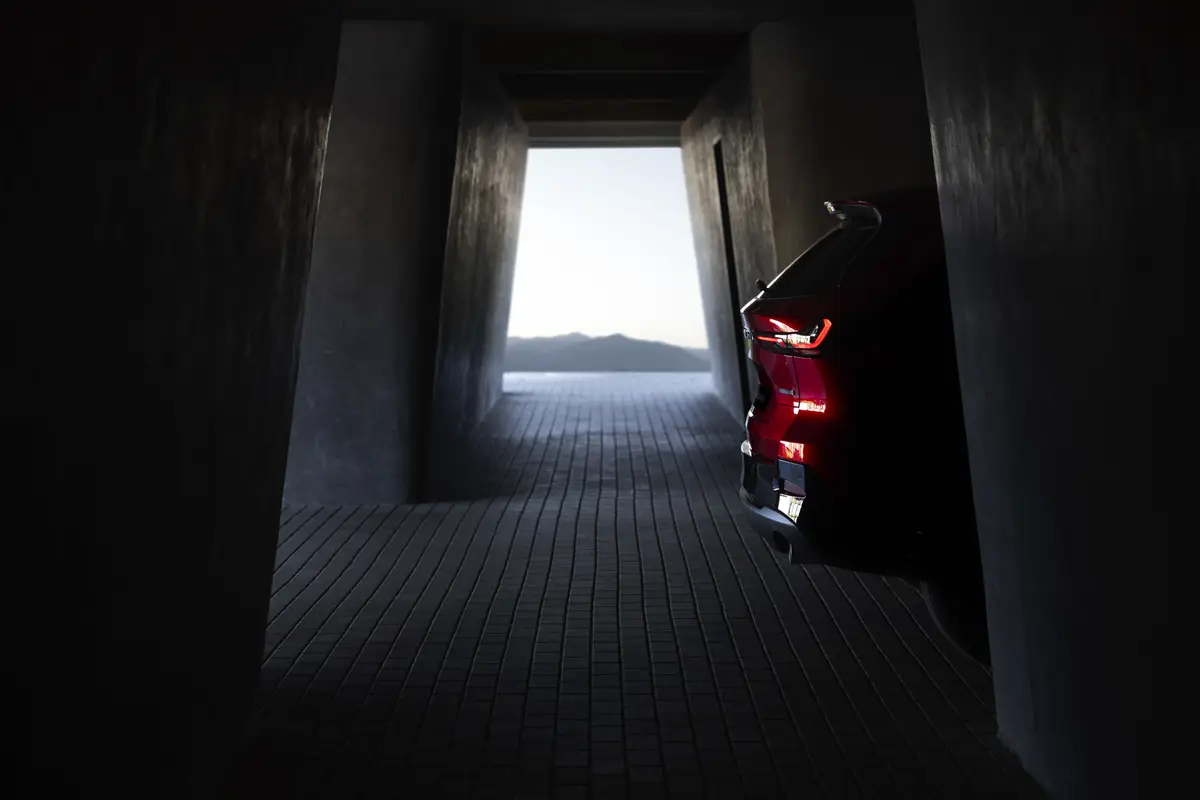Star-Telegram.com's view
There’s yet another new crossover (maybe) on the block. But in the case of the all-new, 2007 Kia Rondo, the manufacturer’s decision to call it a crossover utility vehicle might be a bit of a stretch.
The Rondo, which is now arriving at dealerships, actually is a rather nifty small wagon or microvan that offers the option of a third row of seating, allowing it to hold up to seven passengers.
The new Rondo is “the perfect representation of the Kia brand,” said Len HuntÖ, executive vice president and chief operating officer of the company’s U.S. operations. Hunt, who joined Kia in 2005, was formerly Volkswagen’s top U.S. executive.
“This vehicle delivers on our core promises: value, safety, quality and warranty,” he said. “It’s functional and fun, fuel-efficient, and versatile.”
It’s the sixth new vehicles Kia has introduced in the U.S. market since January 2006 as the company, a subsidiary of South Korea’s Hyundai, pushes for a bigger share of the American pie.
Rondo’s closest competitors are the Toyota Matrix/Pontiac Vibe wagons, which seat only five, and the Mazda 5, a microvan that also comes with a third seat. Toyota and Pontiac don’t refer to their vehicles, which are near clones of each other, as crossovers. In fact, Toyota officially refers to the Matrix as a Corolla wagon.
Neither is the Mazda called a crossover.
But as hot as the genre is right now, it’s no surprise that Kia would want to market the Rondo as a small crossover.
It’s definitely not a minivan, Kia officials insist, and they said at the recent national media introduction of the vehicle in Arizona that they do not expect minivan shoppers to consider the Rondo as an alternative to, say, Kia’s own Sedona, which itself was completely restyled for 2006.
“Rondo buyers are not minivan people,” Kia Motors America marketing chief Ian Beavis said.
Target customers are “people starting a new stage in life,” he said, primarily young couples 25-35 without children, and couples 30-40 with a child or two.
The third seat is intended for occasional use, but unlike the third row in some of the other compact crossovers, the Rondo’s has enough room to hold two average-size adults. Although the Rondo began arriving at U.S. dealerships in December, Kia has sold the vehicle as the Carens in the rest of the world for several years; this is the third generation.
The Rondo’s claim-to-fame here probably will be that it is the least-expensive seven-passenger vehicle in the United States. With the $500 extra for the third seat, the Rondo LX model lists for $18,995, including $600 freight.
That’s not the cheapest model of the Rondo, however. For those who can live without air conditioning, there is a base model that begins at $16,995 (with freight).
That version, which Kia confusingly also calls the LX, cannot be upgraded with the third seat or any other options except the air conditioning, which adds $900.
The company insists there is a market for the entry model without air, which they say appeals to consumers looking for cheap transportation. But even the cheap LX comes with an AM/FM/single-disc CD player, as well as power windows, mirrors and door locks, among other features.
There’s actually a third LX model, as well, but this one’s designation makes more sense: It’s the LX V-6 ($19,495), which comes with the uplevel 2.7-liter V-6 engine instead of the 2.4-liter four-cylinder that is standard in the other LX models.
The V-6, which comes with a five-speed automatic transmission, is rated at 182 horsepower and 182 foot-pounds of torque.
A four-speed automatic is standard with the four-cylinder engine, which turns out 162 horsepower and 164 foot-pounds of torque.
The top Rondo model is the EX, which starts at $19, 795 with the four-cylinder engine, and $20,795 with the V-6 and five-speed gearbox. Oddly, though, the EX four-cylinder is not offered with the third seat; it’s optional only on the EX V-6 and the midlevel LX and LX V-6.
No manual transmission is offered at any trim level.
EPA fuel-economy ratings (based on 2007 government rating criteria) are 21 miles per gallon city/29 highway for the four-cylinder, and 20 city/27 highway for the V-6. Those ratings will drop next year as a new EPA rating formula is applied.
The new rules are designed to make mileage estimates more realistic, taking into account real-world driving conditions. On a four-cylinder Rondo we tested in the Phoenix area, our combined city/highway mileage was 23 mpg.
The Rondo is roomier than the Matrix/Vibe and Mazda 5, because it is built on the chassis of the midsize Kia Optima sedan. The Mazda 5 is on the chassis of the compact Mazda 3 sedan.
Exterior styling is quite similar to that of the Matrix, but it’s also somewhat like that of a couple of larger competitors, the Honda CR-V and Mitsubishi Outlander, which are marketed as crossover utility vehicles.
The Rondo falls short of true crossover status, though, because of its limited ground clearance (less than seven inches fully loaded) and the lack of a four- or all-wheel-drive option. It comes only with front-wheel drive. Four-wheel drive is available on the CR-V and Outlander, but not on the Matrix/Vibe or Mazda 5.
Kia officials said there would not be enough room for the third seat if the drive system were extended to the rear wheels. Fuel economy also was a factor in deciding not to offer all-wheel drive, Beavis said. All-wheel drive usually lowers a vehicle’s gas mileage.
The Rondo could have been made a little higher off the ground, though. On some fairly well-maintained Tonto National Forest roads just north of Phoenix, small rocks that the CR-V and Outlander would glide over easily were too high for the Rondo. So, unlike most crossovers, the vehicle isn’t suited for even light off-road use.
Inside, the Rondo is surprisingly roomy, especially up front. The bucket seats are quite comfortable even for larger people, and middle-row passengers have decent leg and knee room. All passengers are provided cupholders.
The cargo area has 35 cubic feet of space behind the second seat (31.7 if the vehicle is equipped with the third seat). The third seat has a 50/50 folding feature, creating a flat load floor, and the middle seat has a 60/40 split.
Cloth seats are standard, but leather is offered on EX models for $1,000, which also includes front seat heaters. A six-way manually adjustable driver’s seat with height adjustment is standard, along with a four-way adjustable front passenger seat.
In three-seat models, the middle row slides forward up to almost a foot to allow for easy access to the third row. In models without the third row, the middle seat does not move. Without the third seat, there are storage bins with lids in the cargo-area floor, in the space where the third seat would otherwise fold out of the way.
Kia did not scrimp on safety. All models come with electronic stability control, four-wheel antilock brakes, front seat-mounted side air bags, and side-curtain air bags for all three rows. Having all of these features in a small wagon in this price range is unusual.
Other options offered on the Rondo include a body trim kit ($995); crossbars for the integrated roof rails ($200); an LX convenience package ($300), which adds remote keyless entry and cruise control (already included on EX); and a premium package ($1,200), which tacks on a power sunroof, upgraded Infinity 10-speaker, 315-watt audio system with six-disc CD changer).
Surprisingly, though, neither audio system provides an external input jack for an iPod or other MP3 player, something that is becoming standard throughout the industry. The Kia warranty provides extended powertrain coverage for 10 years/100,000 miles. The basic warranty covers the vehicle for five years/60,000 miles, and includes 24-hour roadside assistance.
Latest news



